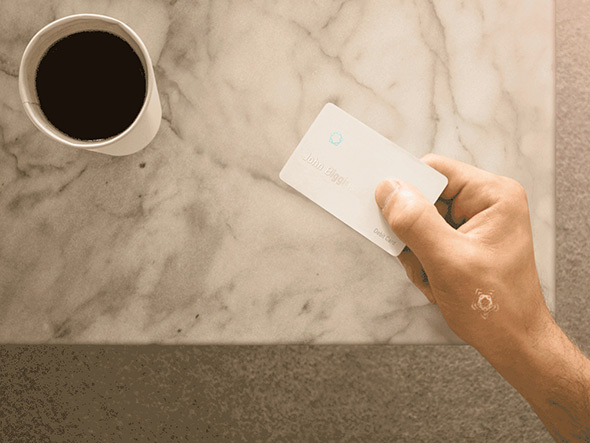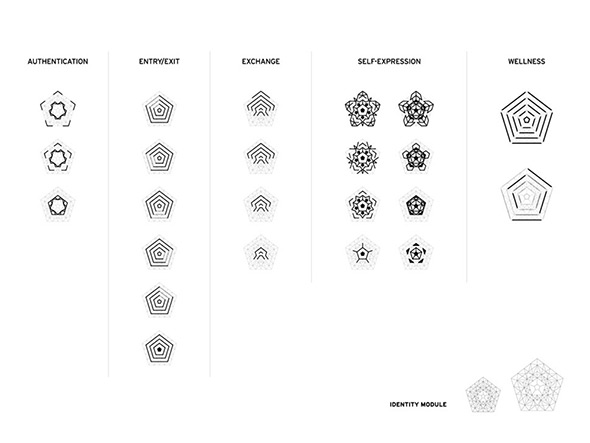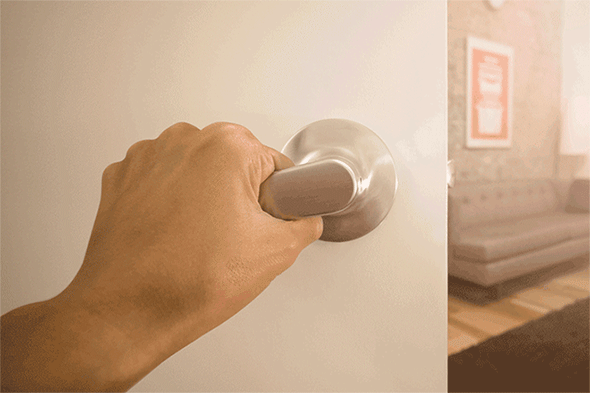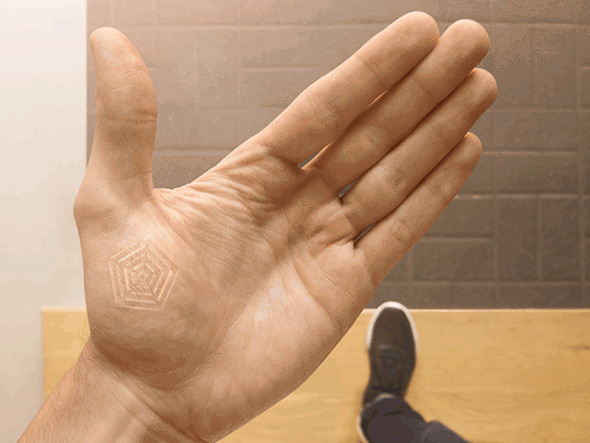An Implanted Wearable Gadget Isn’t as Crazy as You’d Think
Products like New Deal Design’s UnderSkin may be the future.
Reprinted from 

Photo courtesy Wired
“The current batch of wearables confirm our childhood visions of sci-fi,” says Jaeha Yoo, who leads experience design at New Deal Design. It’s easy to see his point: Wrist wearables hark back to Dick Tracy’s watch; Google Glass is reminiscent of Arnold’s sunglasses from Terminator. “It’s a little limited in its imagination.”
There’s new evidence that the next wave of wearables won’t be gadgets you strap on a wrist or tuck behind your ears. Instead, they’ll be tiny digital tattoos decked out with even tinier sensors, like this one by New Deal Design. They’re calling it UnderSkin, and it’s a flat pentagonal device that would be implanted just beneath the skin on your hand and charge off your body’s energy. It’s absolutely a concept (albeit one that the New Deal Design team believes will become a reality within the next five years), so understanding its functionality and its potential requires a little imagination.

Photo courtesy Wired
“It’s rooted in almost uninteresting functionality,” Yoo says. Tasks like opening smart locks on doors, making payments, or tracking basic health data are all obvious use cases for UnderSkin, which was created for Co.Design as part of a project to reimagine the future of wearable devices. The tattoo’s promise gets more exciting when it’s considered within the “augmented identity” framework New Deal Design is working on. “Because it lives within you it acquires your history. As you meet people and exchange information, it becomes a paper trail for yourself,” Yoo says. “This device could also represent a relationship, so when I hold my wife’s hand it reflects that I’m connected to her. Or when I shake a hand, or give someone a high five, it could understand relationships with other people. It becomes something that understands who you are. It becomes kind of a microcosm of you. How that becomes useful beyond authentication may be where self-expression comes into it.”

GIF courtesy New Deal Design
That’s part of the reason New Deal Design picked the hand as the site for UnderSkin. Besides hosting our fingerprints—the most literal piece of our unique identities—we put wedding bands on our hands, we art them with henna, and we let palm readers trace their lines to divine our “futures.” Our hands are already the site for personal storytelling. Those traditions, plus the ubiquity of tattoos, might quell any squeamishness people have about a tech device stuck to their skin.
That said, New Deal Design has a few hefty obstacles in their way. First: the user interface. Other wearables get programmed through an app, on a screen. But part of the appeal of embedded devices comes from the autonomy it could give users. More looking up at the world, less looking down at a miniature screen. “Ideally, you wouldn’t need a corresponding app. Obviously there are ideas—like exchanging a business card—and that information has to go somewhere,” Yoo says. They’ve worked out a two-tattoo solution for now: one on the outside of the hand, and another on the palm that acts as a more private interface. Its kaleidoscope-like pattern could be personally designed to glow in response to different actions like holding a loved one’s hand, or to indicate a health alert.
The second hurdle is the infrastructure. Getting a tech gadget implanted in your skin is safe enough (women can get similar devices for birth control), but still more complicated than swinging by a store or getting your ears pierced. “Will hospitals perform this operation? In which case the barriers to entry are enormously high. Tattoo shops? There’s a huge level of distrust,” Yoo says. Plus, who owns the data collected by UnderSkin? Yoo says a potential solution could be a bitcoin-like block chain that prevents one reigning authority from keeping the data. But, admittedly, “it’s hard to avoid coming off as dystopian or alien.”

Photo courtesy Wired
More than infrastructure and echoes of 1984, Yoo worries about the longevity of UnderSkin. Consider how quickly cheap sensors have changed the landscape of design and technology. Design firms might not perfectly predict what will be available in 10 or 20 years, and can hardly ask users to get new implants the way they would with phones. “We were thinking of the time frame of wearables, and they give you information in the scale of weeks or months,” Yoo says. “If you embed something it needs to be on the scale of decades, the type of data that’s valuable over the course of multiple years.”
More from Wired: